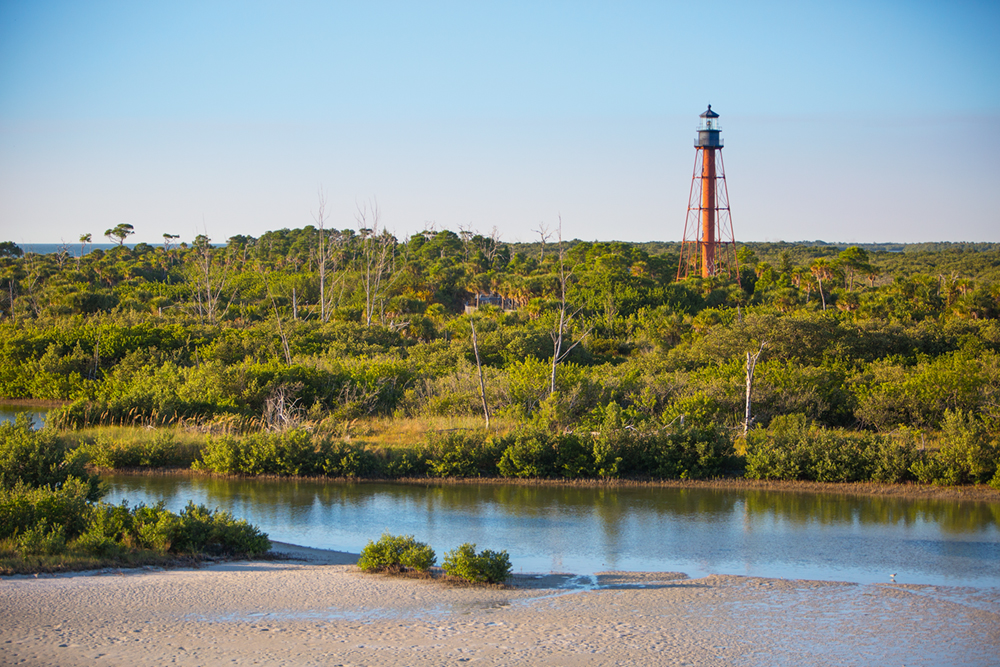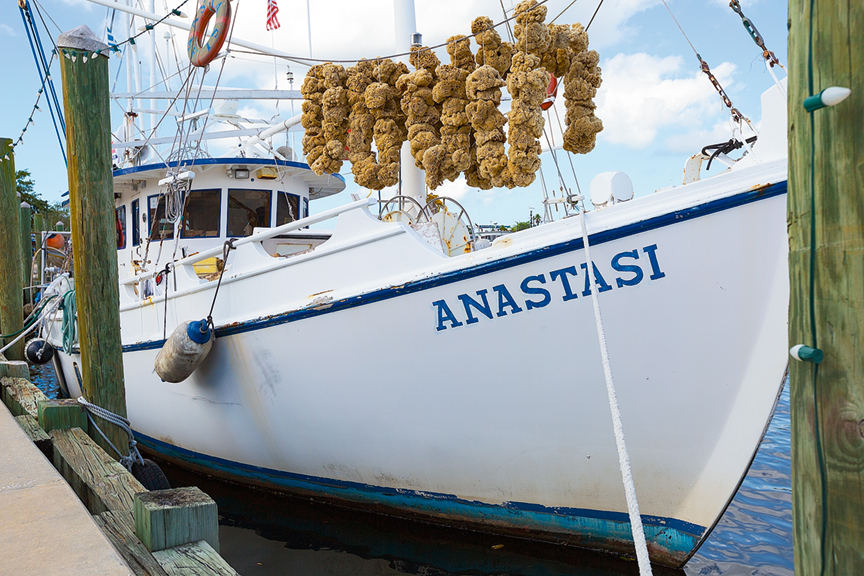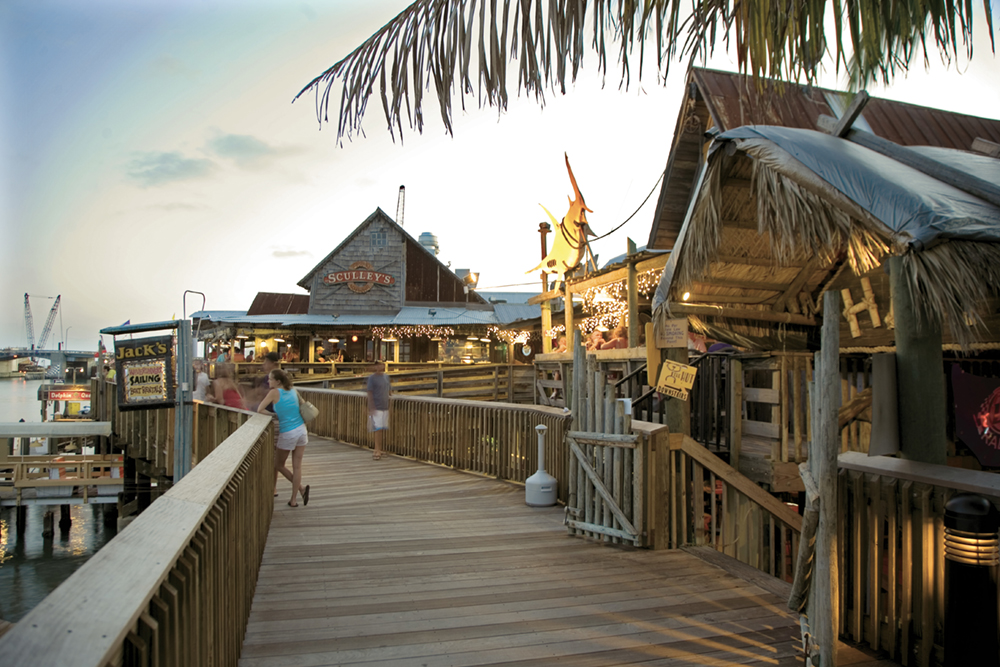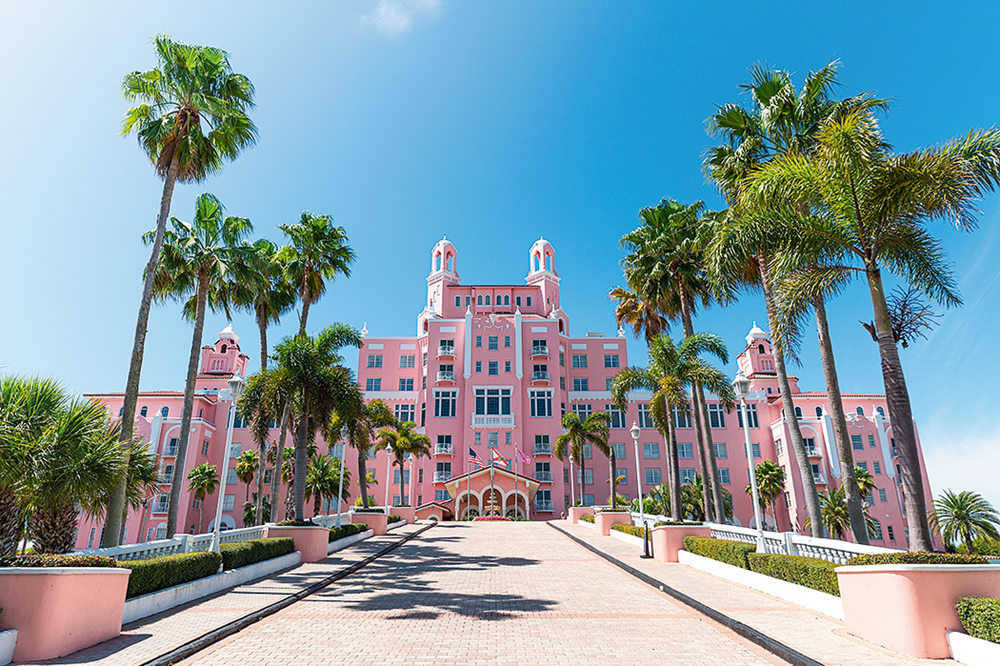Blueways Trail Points of Interest
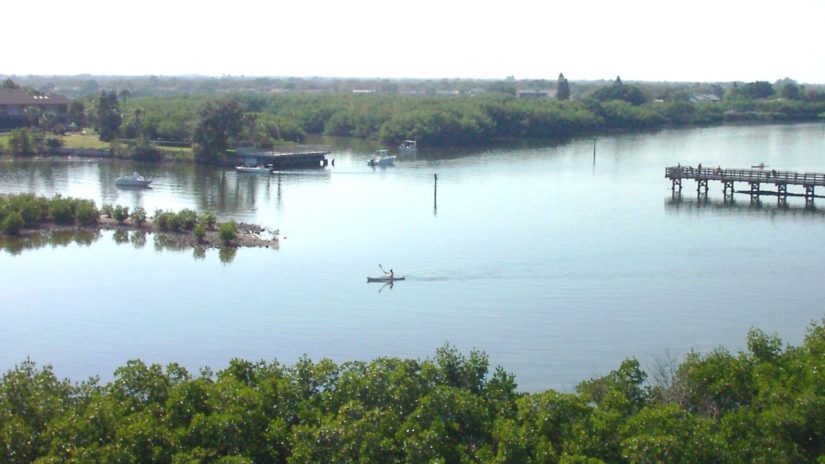
Anclote Key Lighthouse
The Anclote Key Lighthouse was built in 1887, designed to mark the entrance into the Anclote River. The lighthouse was serviced by a series of keepers living on the island, until its automation by the U.S. Coast Guard in 1952. After its automation, vandalism caused the lighthouse to fall into disrepair, and it was decommissioned in 1984. The Lighthouse was re-lit in 2003 thanks to a campaign by the Gulf Islands Alliance Citizen Support Organization and is maintained by a keeper living on the island.
Spring Cavern Near Howard Park
This natural spring is located about 200 yards due north of the second bridge from the mainland on the Howard Park Causeway. If you plan to dive this sink, it is important to do so at high tide and to make sure that you have a diving flag signifying your position. Traffic from personal watercrafts, such as WaveRunners, can be heavy, especially on weekends.
Tarpon Springs Sponge Docks
The Tarpon Springs Sponge Docks are the site of one of the leading natural sponge industries in the world. Here, all aspects of the sponge industry take place, from harvesting the sponges to auctioning them to wholesalers. Located in the “Sponge Capital of the World,” these docks have created a lively tourism industry. They are the focal point for more than 100 shops and many restaurants featuring some of the most authentic Greek cuisine in Florida.
John’s Pass Village
This quaint fishing village at the south end of Madeira Beach features a 1,100-foot-long boardwalk, 100 retailers “with unique shopping, cruise lines, a variety of restaurants, boat rentals, jet skiing and parasailing” and the local fishing fleet. This site is home to the legend of Pirate John LeVeque, who is believed to have buried his treasure on Madeira Beach in the 18th Century. Upon returning for his treasure after a hurricane, LeVeque found that the beach had been washed away and a pass had formed between what is now Madeira Beach and Treasure Island. LeVeque stayed in the area, fishing and swimming the waters and searching for his treasure. John’s Pass is named for LeVeque in honor of his discovery of the area and for the treasure he never found.
The Don CeSar Hotel
Built in 1924 by Thomas Rowe, the Don CeSar Hotel fulfilled his dream of constructing a pink castle. The “Don” has hosted a number of rich and famous guests, including F. Scott Fitzgerald, Franklin D. Roosevelt and Al Capone. Facing financial troubles the Depression, the New York Yankees signed a three-year contract with the Don to house the players during spring training, bringing in substantial funds and an entourage of sports writers and editors, nearly filling the hotel to capacity and saving the Don from closure. In 1944, the U.S. Army seized the hotel and used it as a convalescence center for wounded troops. The Army left in 1945, but the hotel was subsequently taken over by the Veterans Administration and other government offices, before being vacated and falling into severe disrepair. The hotel was refurbished and re-opened in 1973. It was named to the National Register of Historic Places in 1975 and continues to operate as a hotel to this day.
North Beach
In 2005, Stephen Leatherman (Dr. Beach) named North Beach in Fort DeSoto County Park “America’s Best Beach.” Beaches are the No. 1 recreational destination for Americans. This all natural, undeveloped beach offers vast stretches of white sand and natural vegetation. At high tide, the beach can become an island, making visitors wade to reach the pristine sand.
The St. Petersburg Pier
The Pier has been a landmark in downtown St. Petersburg since 1899. During its lifetime, the Pier has been renovated and undergone extensive changes several times. It became the “Million Dollar Pier” in 1926, and, in 1973, it was rebuilt as an inverted pyramid. The pyramid was closed in 2013 and rebuilt as the St. Pete Pier, which opened in 2020. Today, the Pier is surrounded by a 26-acre park that houses public art, including “First Flight,” a life-sized sculpture of the Benoist (pronounced Ben-Wah), the biplane that pilot Tony Jannus flew round trip to Tampa on Jan. 1, 1914. Another highlight is “Bending Arc,” a billowing net sculpture by internationally renowned, Tampa Bay native Janet Echelman. The new St. Pete Pier is also known for shopping, dining and a splash pad for kids of all ages.
